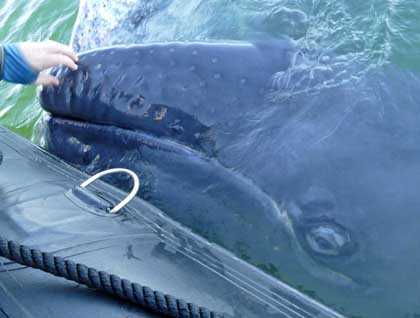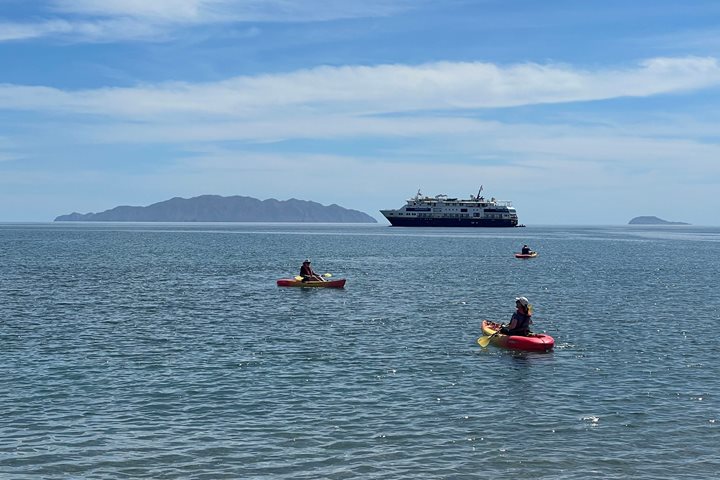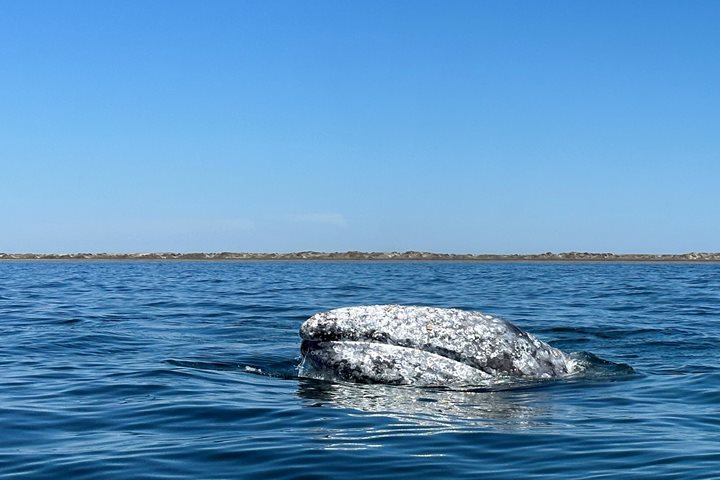We stop our little boats in the lagoon, listen to the misty rainbow breath of whales and watch it drift like a veil through the early morning’s still air. A dolphin leaps and breaks the calm sea surface into droplets. Slippery whale calves slide off the backs and heads of their patient mothers. All around us, California gray whales nurse their young… In just six week’s time they’ll begin a five- to six-thousand-mile journey north to the cold productive waters of the Bering and Chukchi Seas; their feeding grounds off the coast of northern Alaska. Swimming within 20 miles of the coast, thousands of these remarkable cetaceans will cruise slowly up the Pacific Coast. Some will lose their calves to hungry killer whales and sharks; most will make it through the Aleutian Island chain and spend the sub-arctic summer replenishing their blubber layer by scooping up bottom dwelling crustaceans (benthic amphipods).
All of us were fortunate to spend some very memorable moments this fine morning with Olivia, a most unusual large mother California gray whale with a big, healthy, boisterous calf. Mostly she logged at the surface, appearing to be asleep, while her youngster swam in happy circles around her. Our local pangueros (guides) who know the area and the whales suggested we approach her ‘cabeza’ or head. Olivia seems to truly enjoy pressing lightly against the side of the inflatable boats as we rubbed her cabeza and her calf and photographed both the whales and each other. Though this whale appears to be quite mature, she has very few barnacles—perhaps she’s spent some time in fresh water and they died off? It’s impossible to know for sure, but awfully fun to contemplate.
Late in the morning we weighed anchor and headed south in Hull Canal, and later out through La Entrada into the Pacific Ocean for our overnight voyage to the Cape. A stunning green flash and breaching humpback whales topped off another beautiful day in Baja California!









